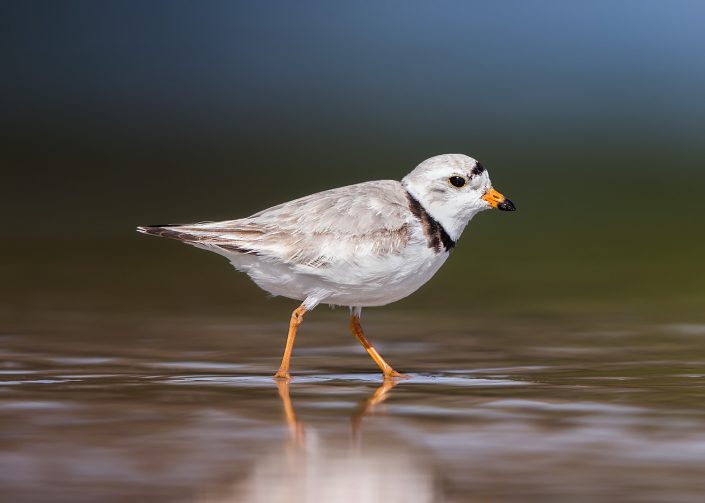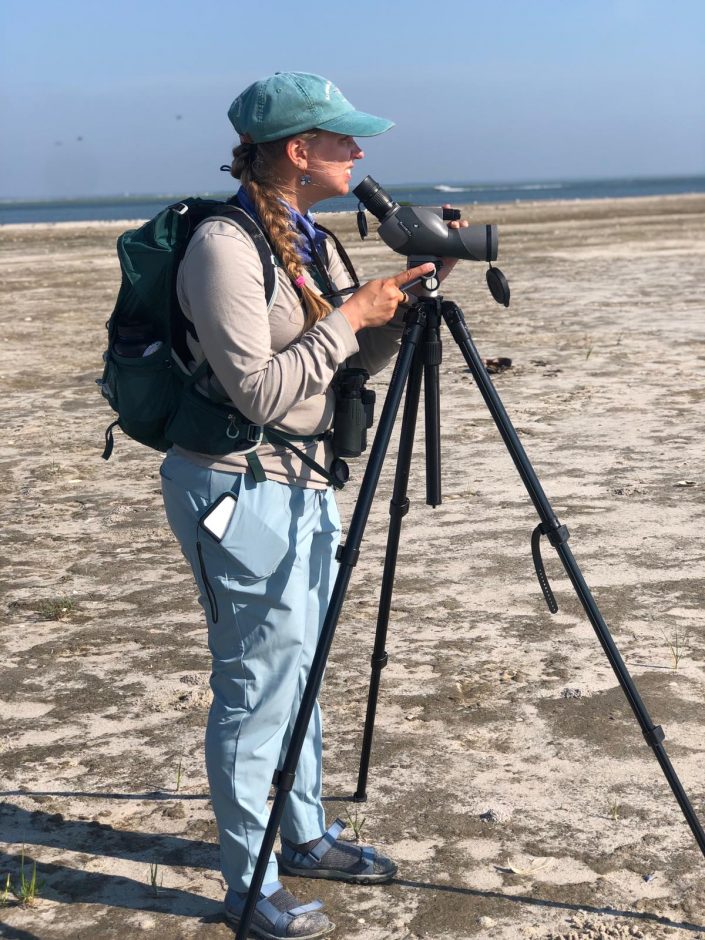Holgate – Record Breaking Site for Piping Plovers
by Todd Pover, Senior Wildlife Biologist

Holgate, a unit of the Edwin B. Forsythe National Wildlife Refuge, is having another record year for piping plovers. A total of 49 pairs have nested at the site this year, up from 46 pairs in 2021, which was also a record, by far, from the previous high for the site. Since Superstorm Sandy devastated much of the New Jersey coast in October 2012, the number of piping plovers nesting at Holgate has increased fourfold.
There are several reasons for this remarkable increase in the piping plover breeding population at Holgate, but make no mistake about it, without that powerful storm, it would not have been possible. Piping plovers prefer open, sparsely vegetated habitats where they can use their camouflage to an advantage to hide from predators. By the time Sandy struck Holgate, most of the beach, except the extreme southern tip, was characterized by an expansive mature dune system, limiting the amount of suitable habitat for plovers to nest. The storm completely flattened the dunes, pushing sand into the bay, creating what is called an “overwash”, in this case about a mile long. These conditions are ideal for piping plovers, not only creating more space to nest, but also ocean to bay access to forage. The low energy backshore is especially favorable for chicks, who can “park” themselves there and feed nearly continuously instead of waiting for low tides to expose invertebrates on the oceanfront. Studies have shown this type of habitat typically produces more chicks than beaches with more limited foraging opportunities.
Factor in that the Refuge is closed to all public uses during nesting season – so the chicks have undisturbed feeding as well – and the stage is set for Holgate to be one of the best breeding sites in the state. Even so, the increase in pairs didn’t occur overnight, it took a few years after the storm for birds to find the new habitat. Once they settled into it and the number of fledglings – who often return to the same site the following year – started to increase, the number of pairs rose, as well. Fortunately, periodic severe storms during the non-breeding season have allowed the ideal habitat conditions to mostly persist. However, the key question now is for how much longer, as the site is slowly reverted back to one with more vegetation and maturing dunes.
CWF has a vital role at Holgate; under a cooperative funding agreement with the Refuge, we monitor and manage the beach nesting birds, including piping plovers, at the site on their behalf. As we enter July, CWF’s on the ground field staff has shifted gears from intensive nest searching, which they focused on from April – June, to the equally challenging task of brood monitoring. The first trickle of fledglings was recorded earlier in the month, but the full extent won’t be known until sometime in mid-August.
Holgate currently has more pairs of piping plovers than anywhere else in the state, it will likely host almost 40% of the entire statewide population once the final numbers are tabulated this year. For the number of pairs to continue to increase or at least remain at record levels, the breeding pairs currently present at the site need to produce a robust number of fledglings. It is still too early in the season to know whether it will be a highly productive year for chicks at Holgate. Stay tuned!

Discover more from Conserve Wildlife Foundation of NJ
Subscribe to get the latest posts sent to your email.
Leave a Comment
Just the type of news or update I needed..
I rarely if ever comment anymore but rest assured I still care just as much as when I was more ‘vocal.’
Keep up the amazing work..
Grand news! My mother & sis spent 6+ months counting piping plovers and creating a play about them for visitors to the National Park in NC early 90’s. Delighted the population is increasing.
Comments are closed.